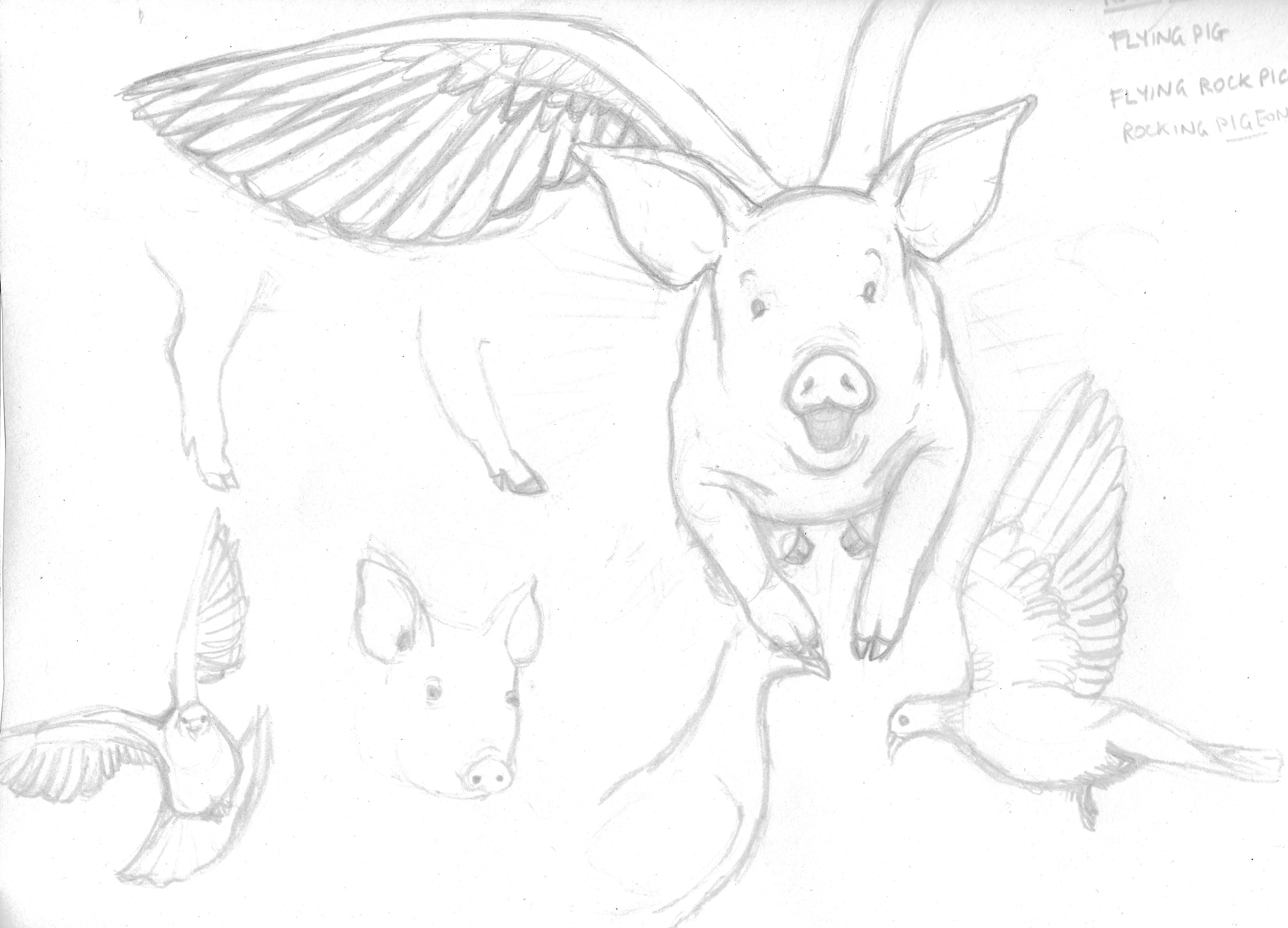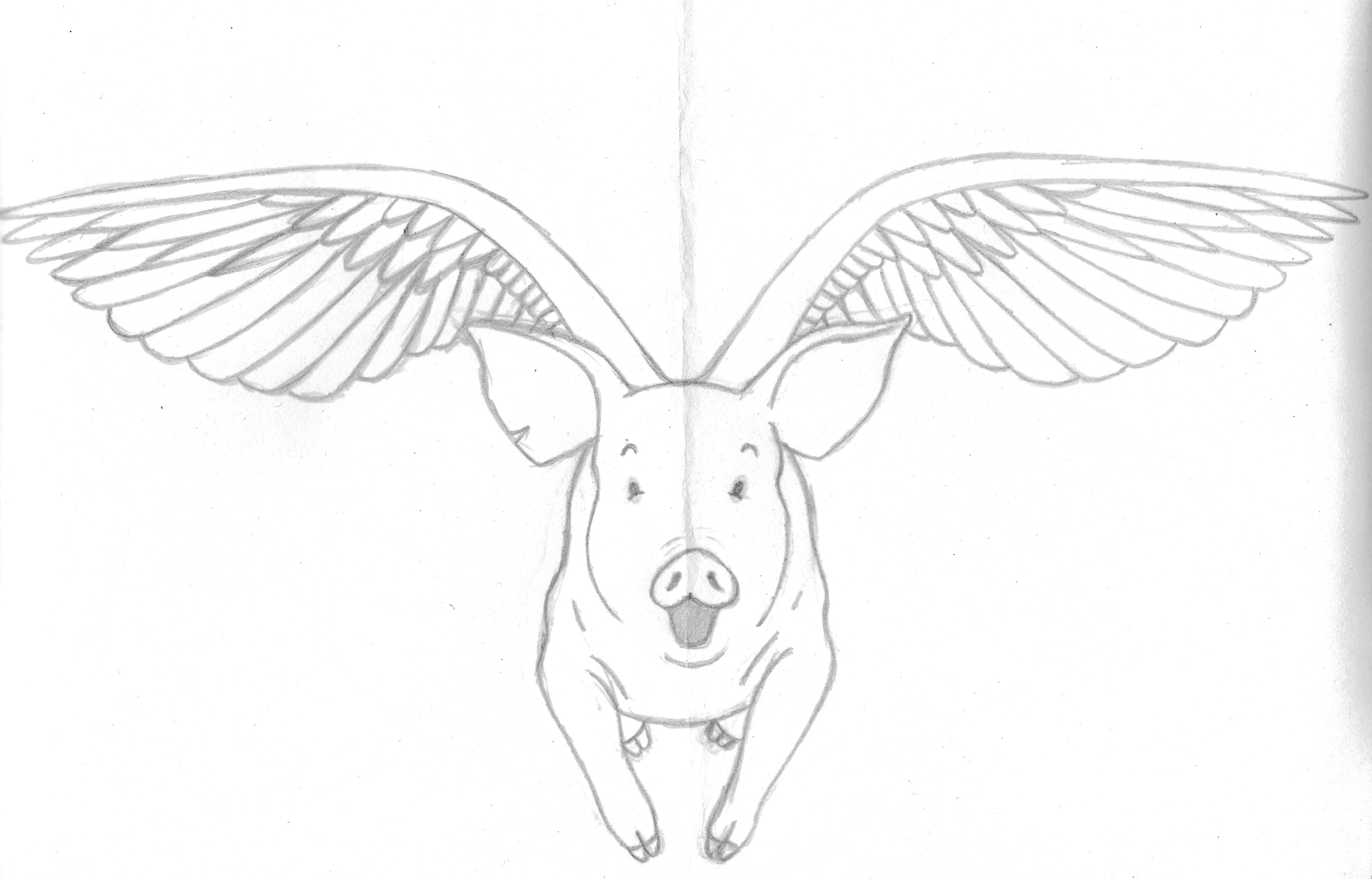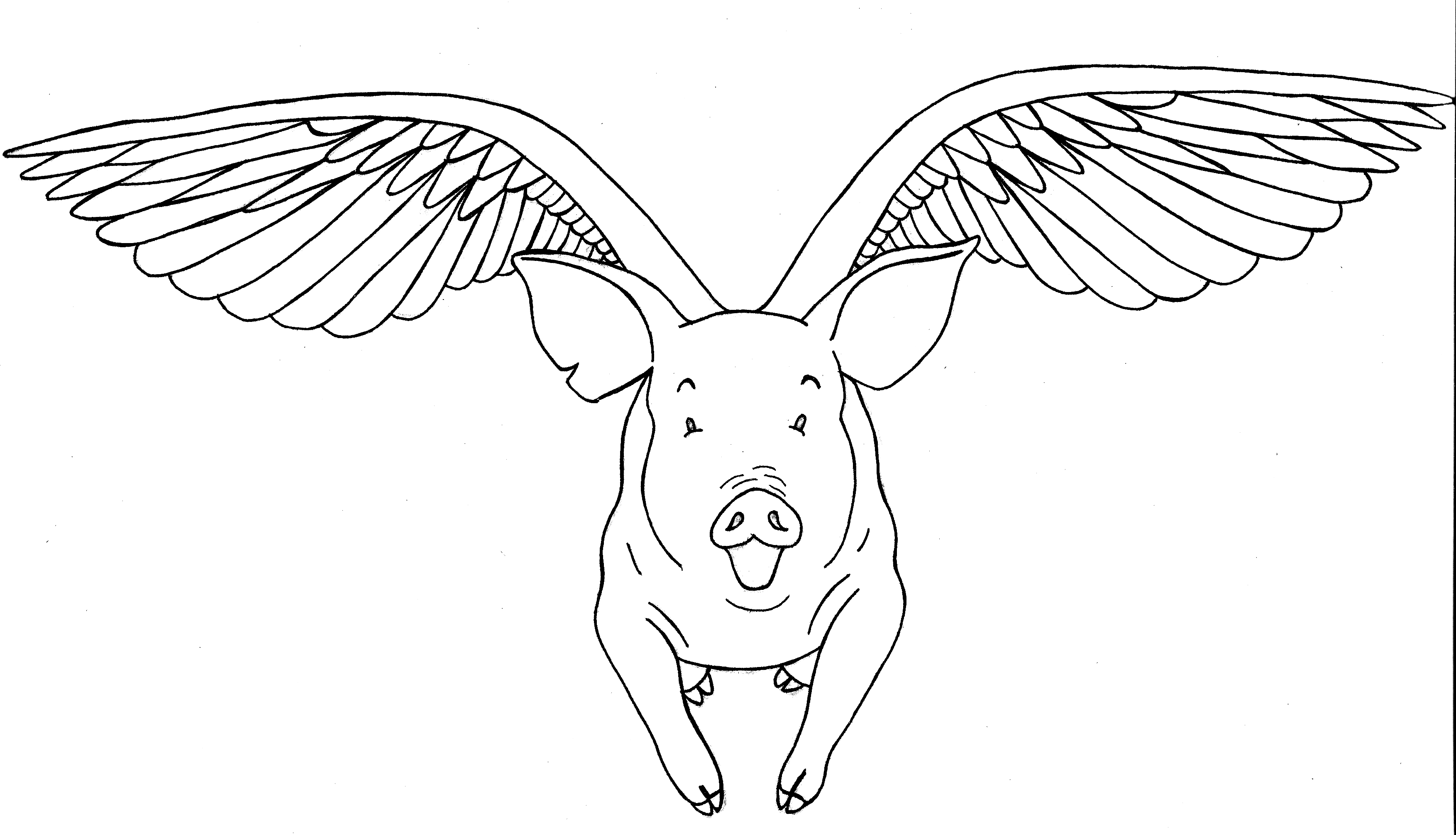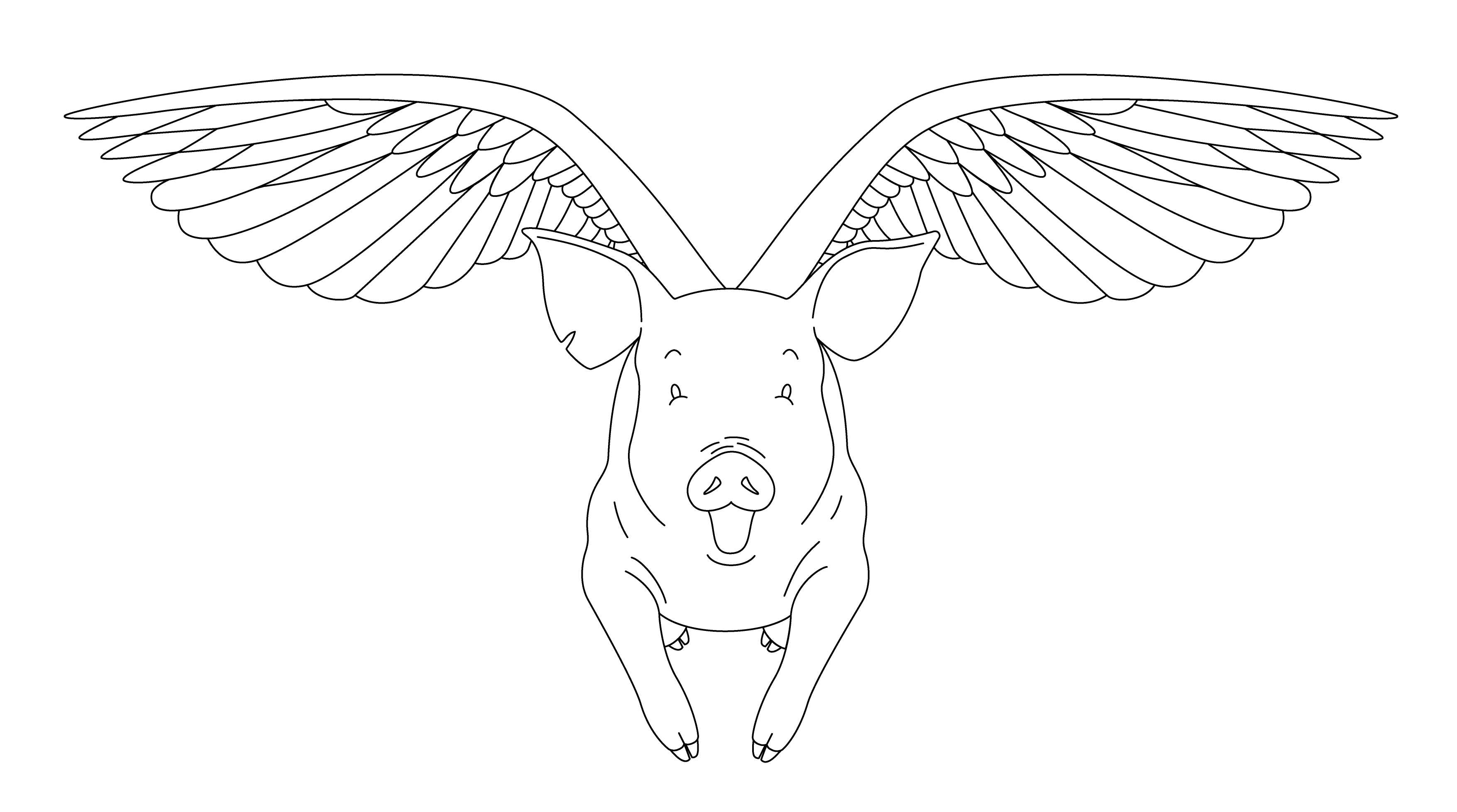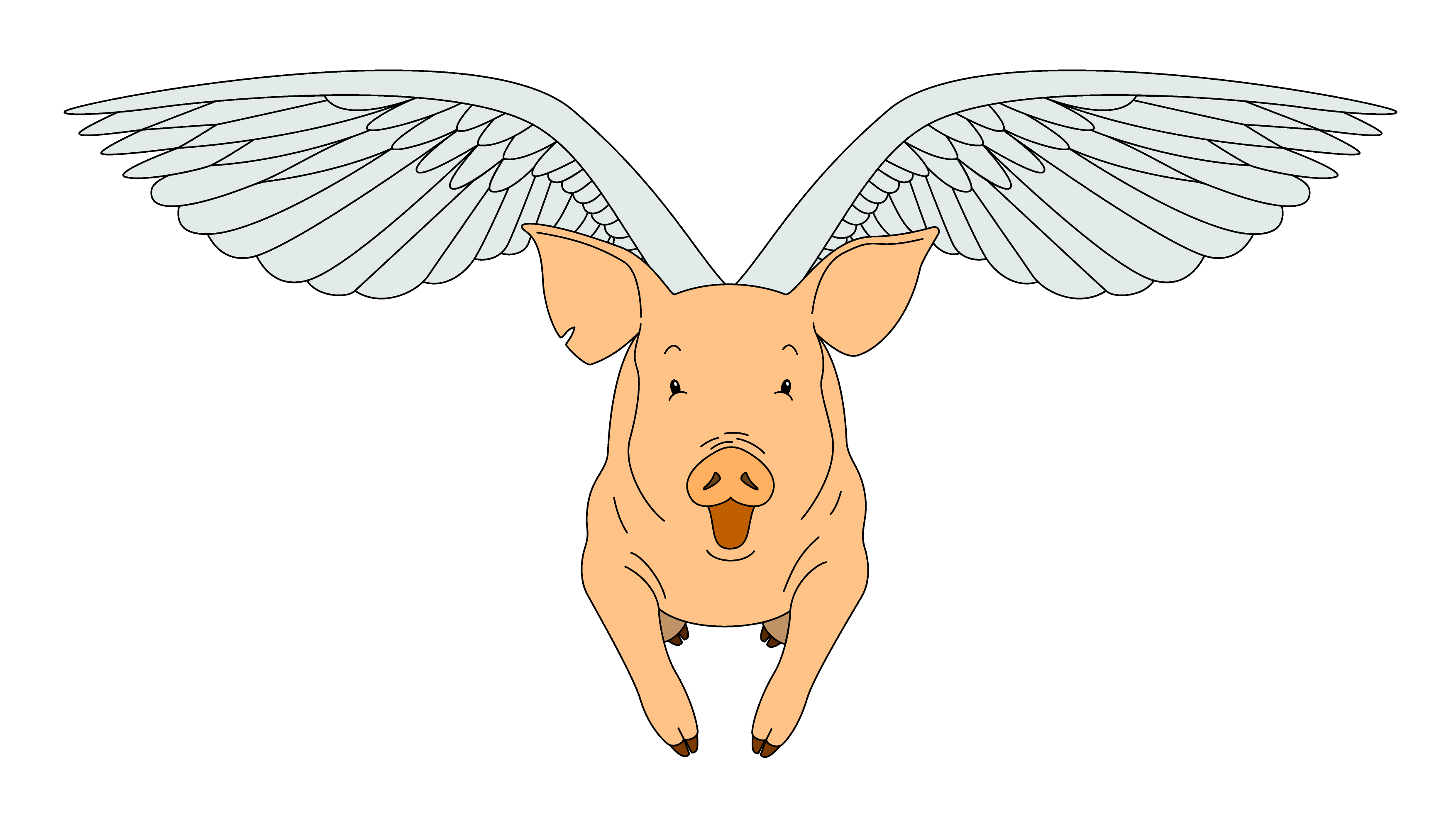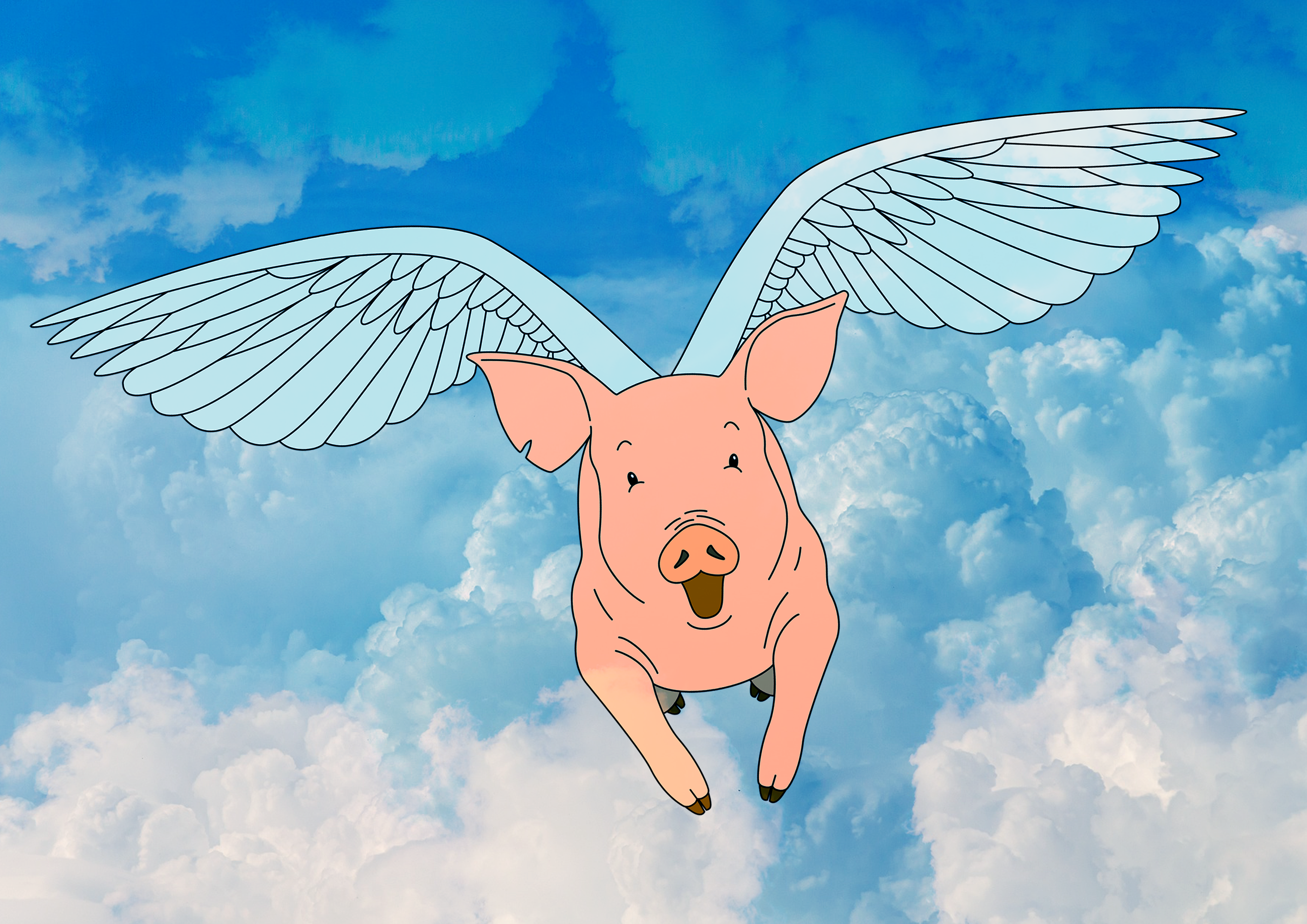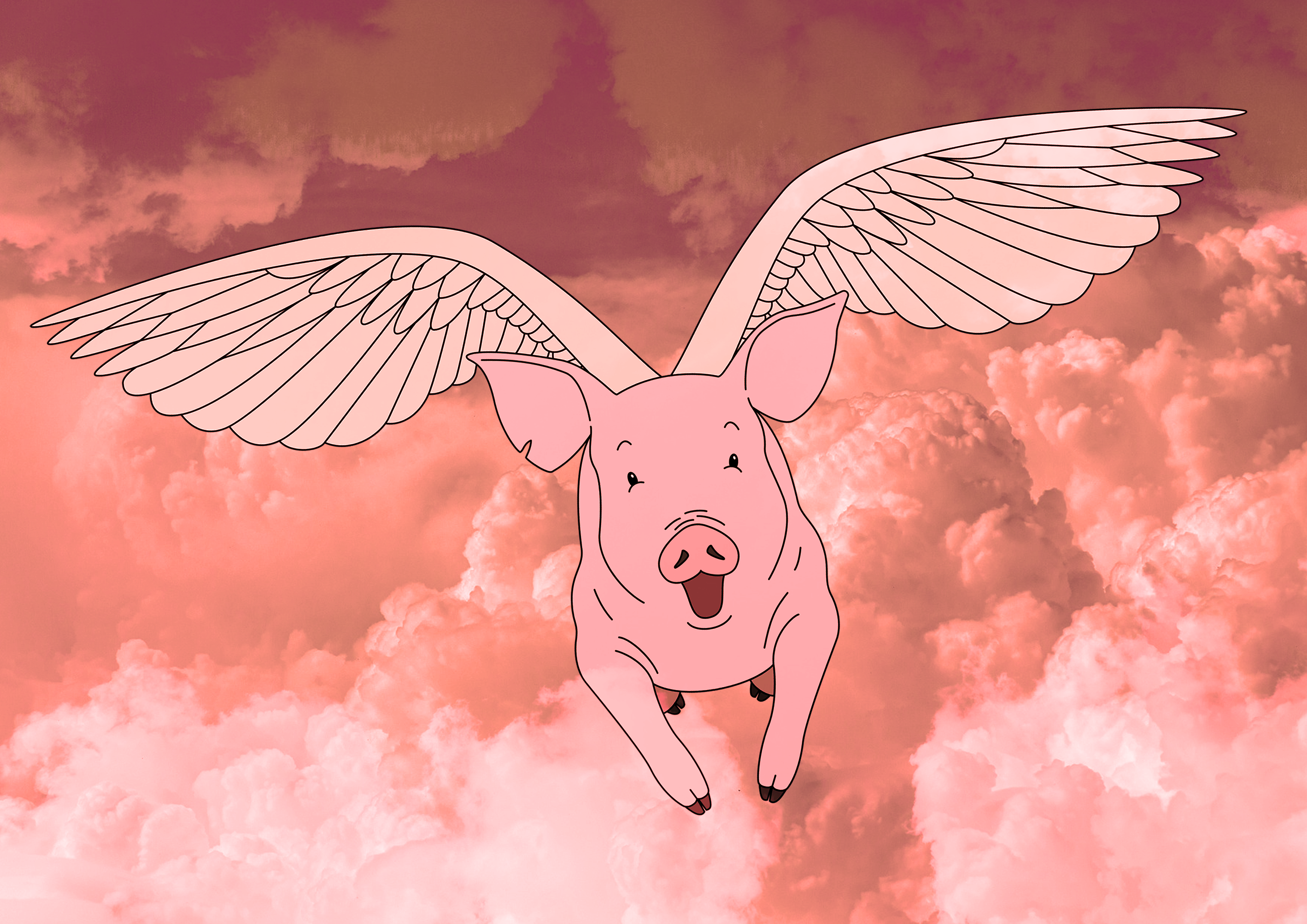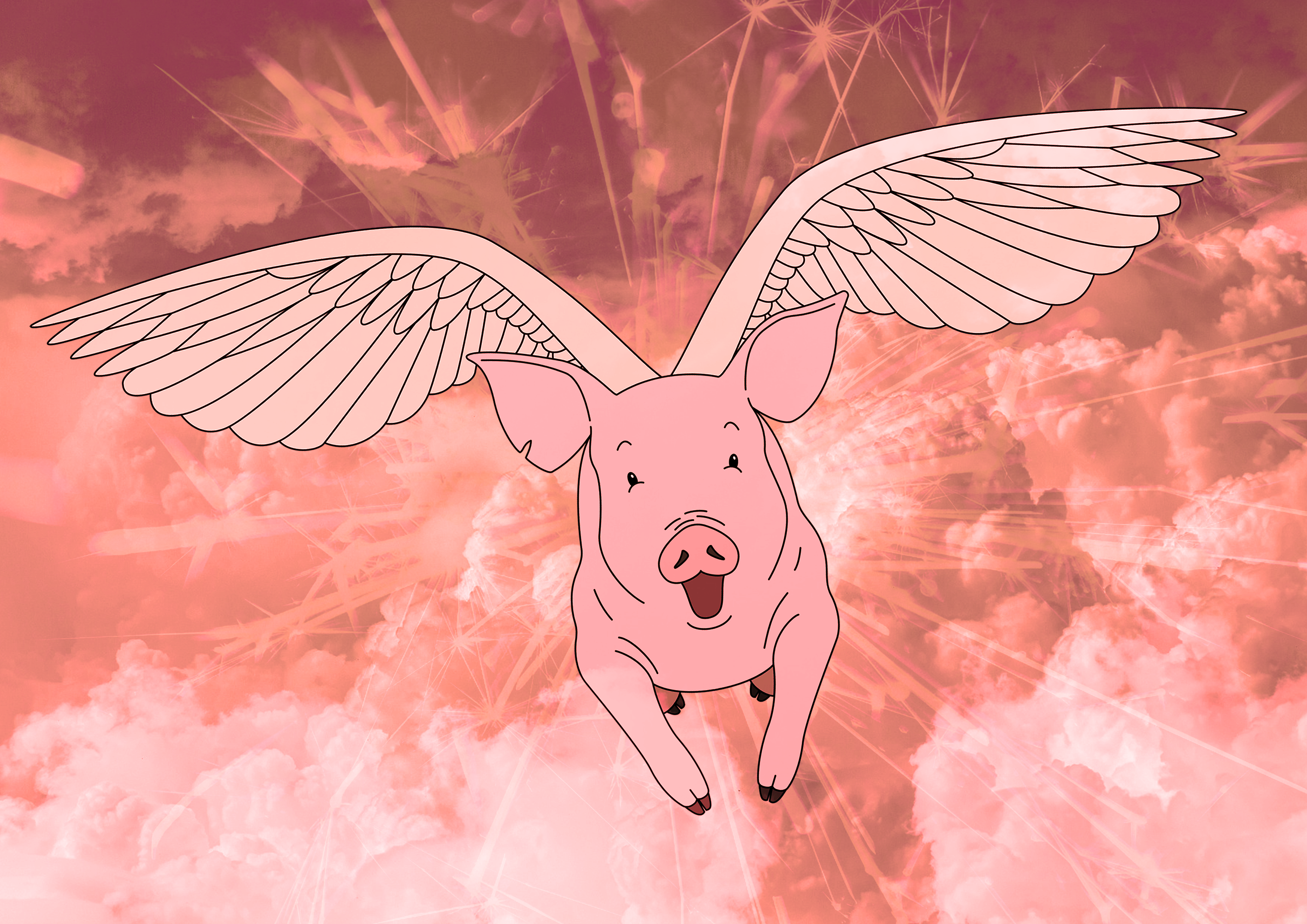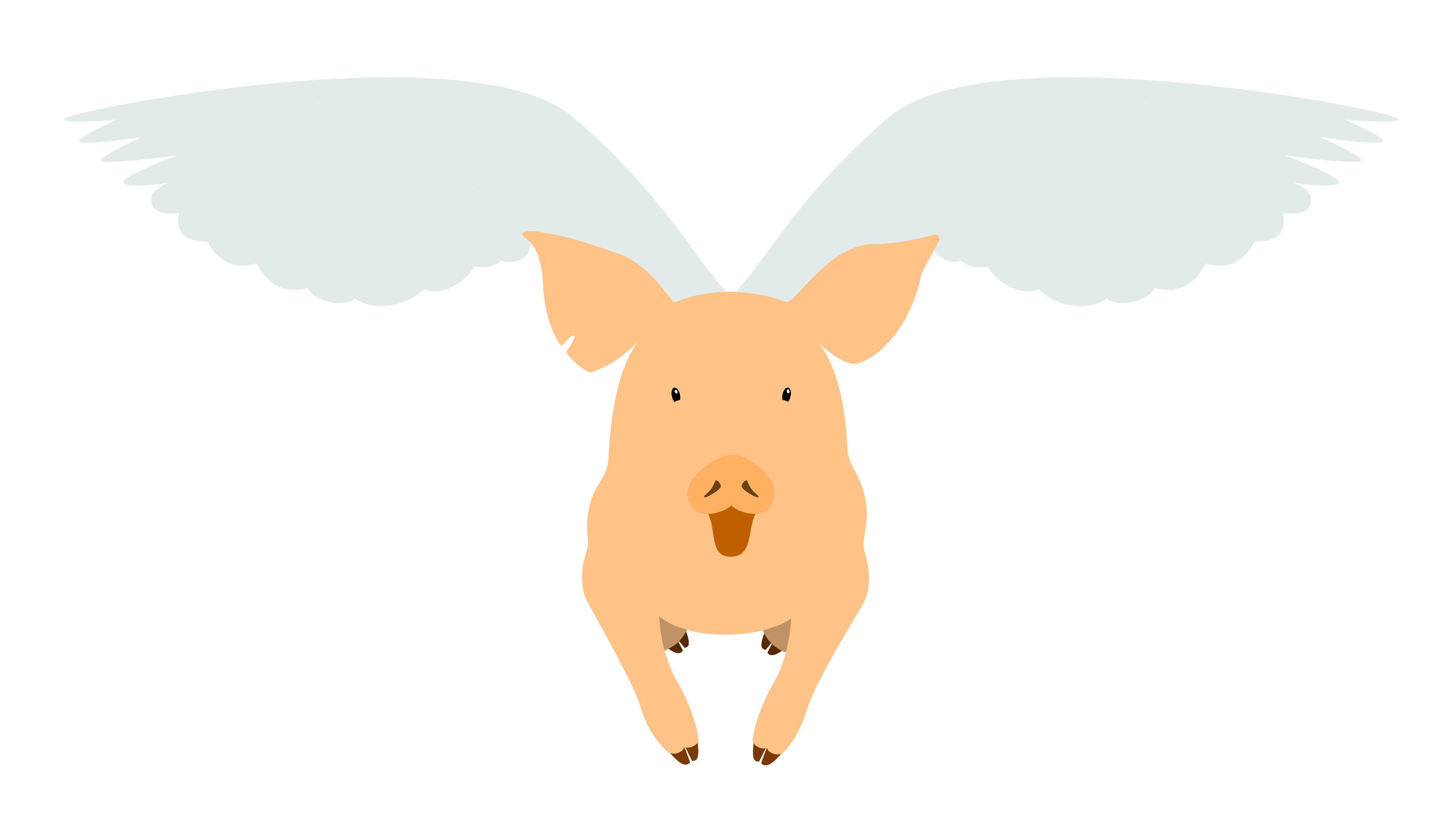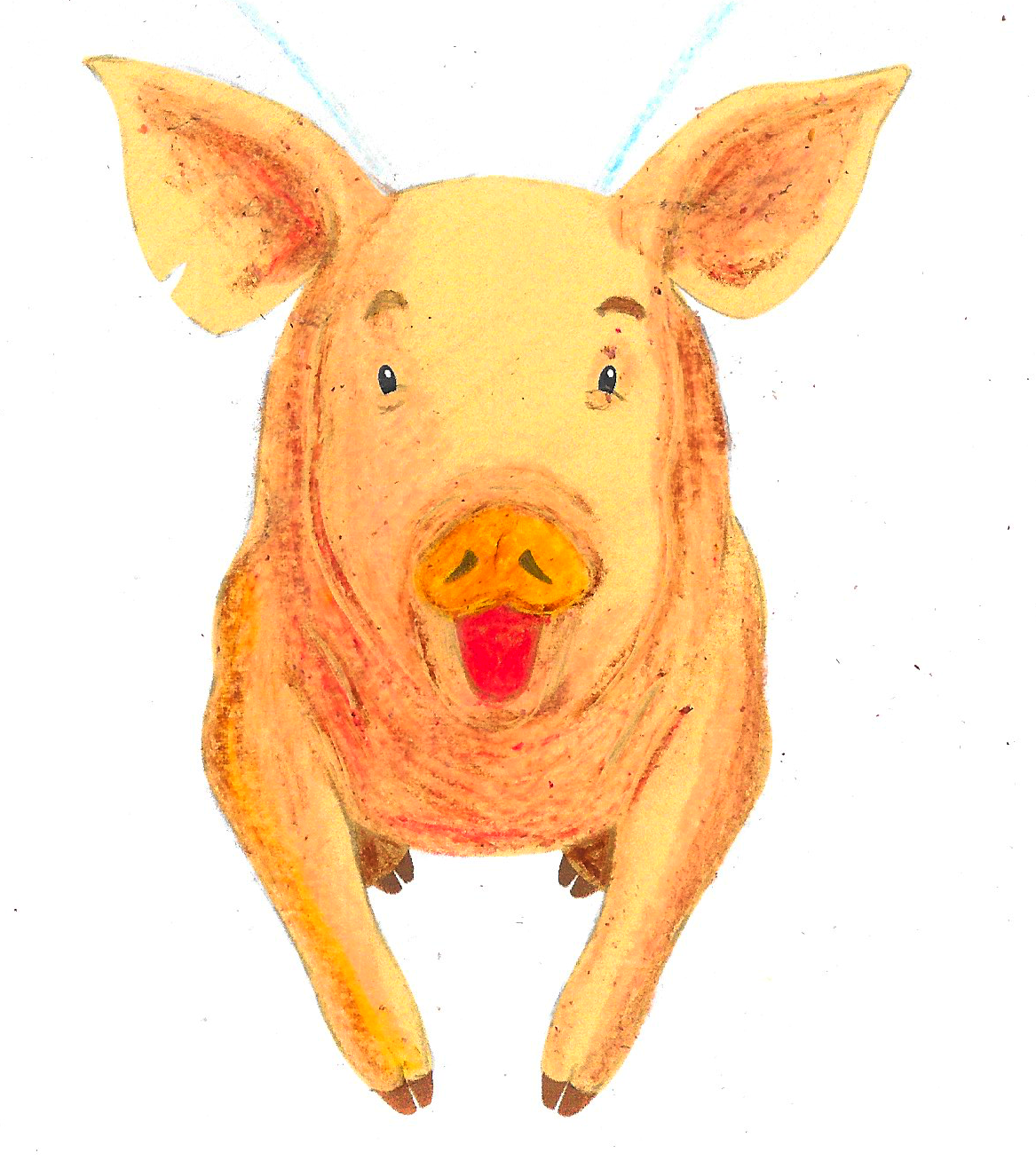Working around the theme of ‘hybrid’, create a series of illustrations using the following processes:
Starting on paper and moving onto a computer, follow this process:
DRAW – SCAN – COLOUR
Starting on the computer and moving to paper, follow this process:
COLOUR – PRINT – DRAW
Are there other combinations of mixing and matching digital and analogue (non-digital) ways of working you can identify and try out?
Reflect on whether these process have offered you something new or unexpected.
Initial Research And Mind Mapping
I started this exercise by focusing on the theme ‘hybrid’, which made me think of mythical creatures. I found a comprehensive list of these on Wikipedia and, after reading a summary of each, selected those that I could envisage as a a potential options to explore. I then drew a mind map with key points relating to each of these.
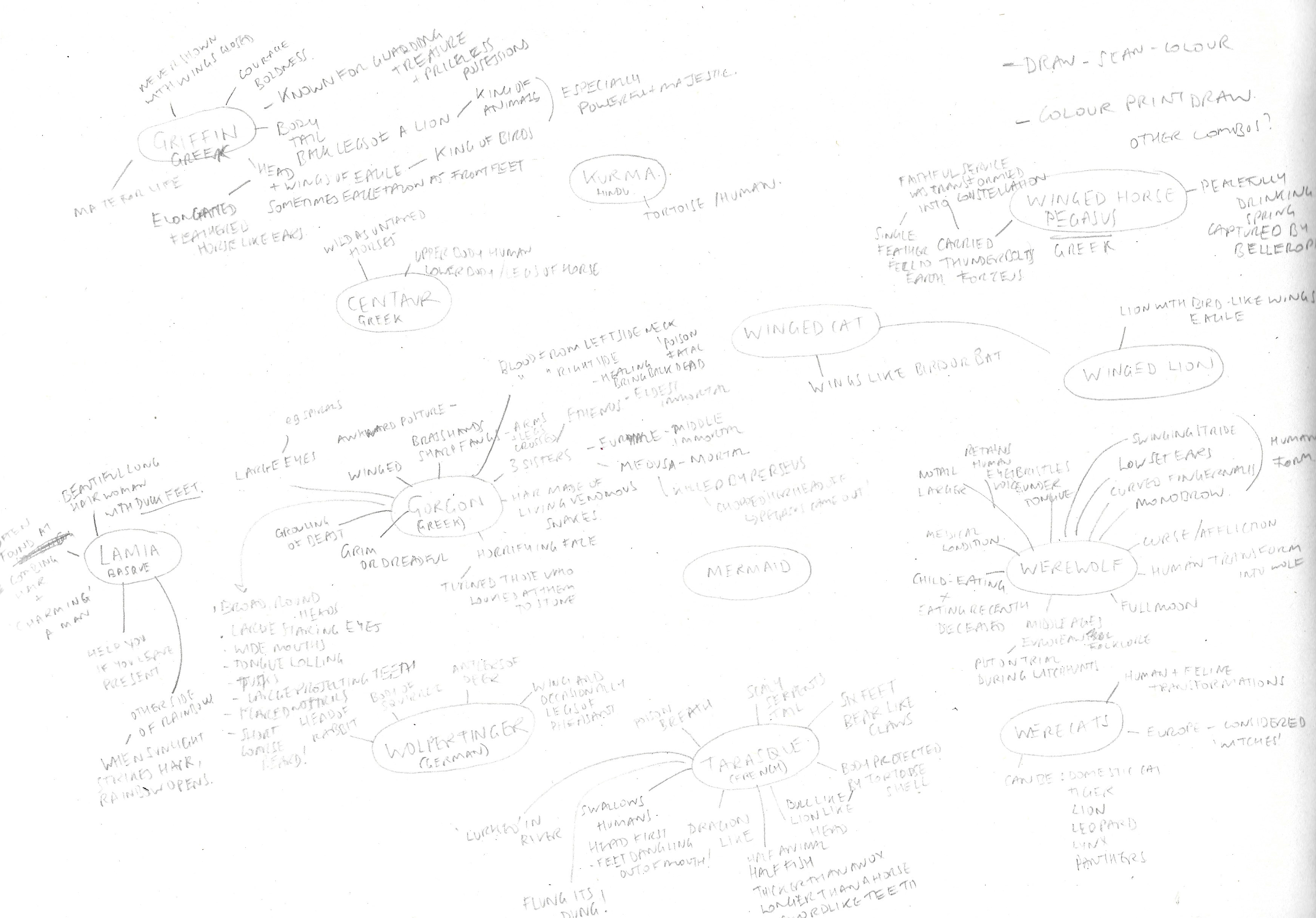
(click on image for larger version, opens in new tab)
I felt that I was becoming fixated on the research element and procrastinating (which is a tendency of mine). I decided to keep it simple and try to focus on what the brief asked of me, i.e. to experiment combining digital and analogue techniques rather than dithering over what subject to use. However, I did find the research eye-opening and plan to refer back to some of these characters in future projects.
I also did try to find examples of artists who combine digital and traditional illustration techniques, but mostly I was presented with tutorials on how to colour digitally in photoshop. I am hoping that I will come across more inspiring examples as I progress through this unit.
Sketching Ideas
A few years ago there was a mini-figurine of a flying pig in a barber shop’s window, which I used to walk past on the way to work. I wish I had a taken photo of it. I have always liked the idea of flying pigs so settled on using this concept for my illustration. I started by researching images of pigs and birds in flight. Again, my mind did begin to divert to thoughts of combining a pig and rock pigeon to create a flying rock pigeon, with its very own electric guitar and rockstar pose…
Drawing the Flying Pig
Once I reached a point where I felt fairly comfortable drawing a recognisable pig, I drew a first draft. During the Graphic Fiction unit I implemented the technique of flipping a drawing over on a light-box so I could see all the inaccuracies in terms of symmetry and positioning. Each time I am amazed by how many issues there are with the drawing when presented with the reverse, but it is always very satisfying to be able to correct these. After flipping the paper several times I was reasonably happy with the drawing. The wings took an extra level of concentration and patience.
I then used this drawing as a template to draw an ink version using 0.3 and 0.5 fineliners.
Adding Colour Digitally
Once I reached this point I became a bit stuck with how to proceed. Unfortunately I am woefully lacking in painting skills in Photoshop and tend to gravitate to the safety of Illustrator. I have always wanted to learn how to use Photoshop properly, but have yet to undertake this – I find it quite intimidating, especially when exposed to some of the incredible work that some people are able to produce.
After some delay I proceeded to scan the pencil sketch into Illustrator and used the pen tool to create an outlined version.
Next, I added flat colours. I am still not very confident with colour and always try to keep it as simple as possible, but I know I need to experiment further and practice different effects. I thought my illustration was more of a starting point that could be developed in terms of tone and colour, rather than successful as a finished piece.
Digital Composite
I was really not happy with my coloured version of the flying pig so I decided to take it into Photoshop and found some stock photos of skies via Pixabay. I selected a couple which I then layered with a PNG of the flying pig. I also made a couple of adjustments to the colour.
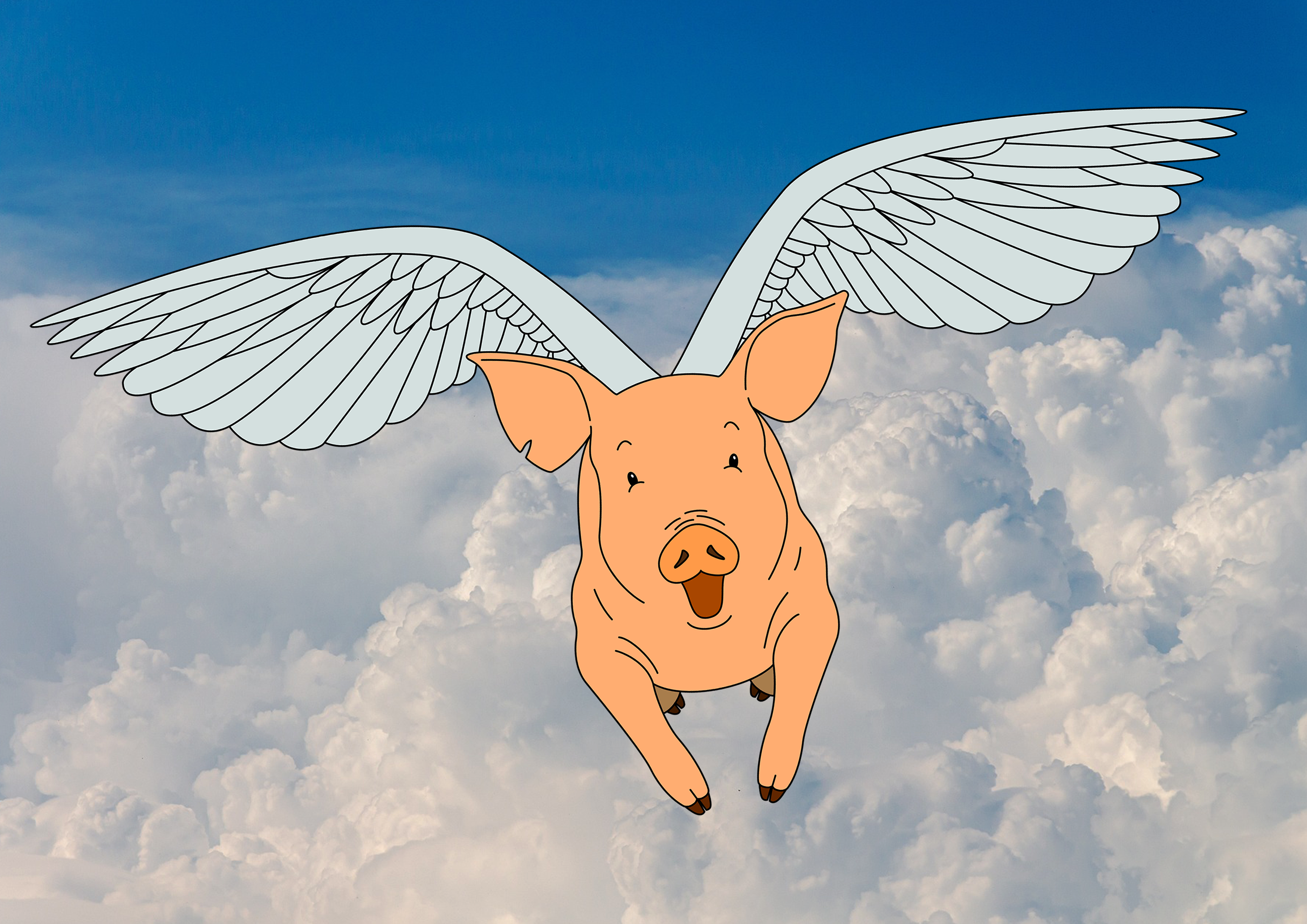
(click on image for larger version, opens in new tab)
I then decided to experiment a bit further with regards to colour adjustments and blend modes. It ended up looking like a bizarre dream-like, candy floss landscape with an angel winged pig…
I thought I would play on this visual assessment by adding a radiating bright light behind the pig, achieved by using a photo of a sparkler. I think I may have lost the plot by this point, but I actually quite liked the result. I could definitely have improved it by adding textures and the tone as suggested in the previous stages as the pig does not really blend in with the background very well.
Drawing On Printed Colour Version
I was actually more anxious about the second part of the brief which required me to apply colour digitally, print and then draw on this using analogue materials. In the end, I removed the lines from the Illustrator version of the flying pig and printed this.
I had a severe mental block at this point as I thought I could not use paints or anything that involved water on the print out. I also found the image was quite small on an A4 sheet of paper and this made it tricky to add detail to.
I chose crayons for my first attempt, but partly due to the size of the pig and my choice of colours it ended up looking particularly poor. I tried to improve it by adding pencil outlines, but this made it even worse.
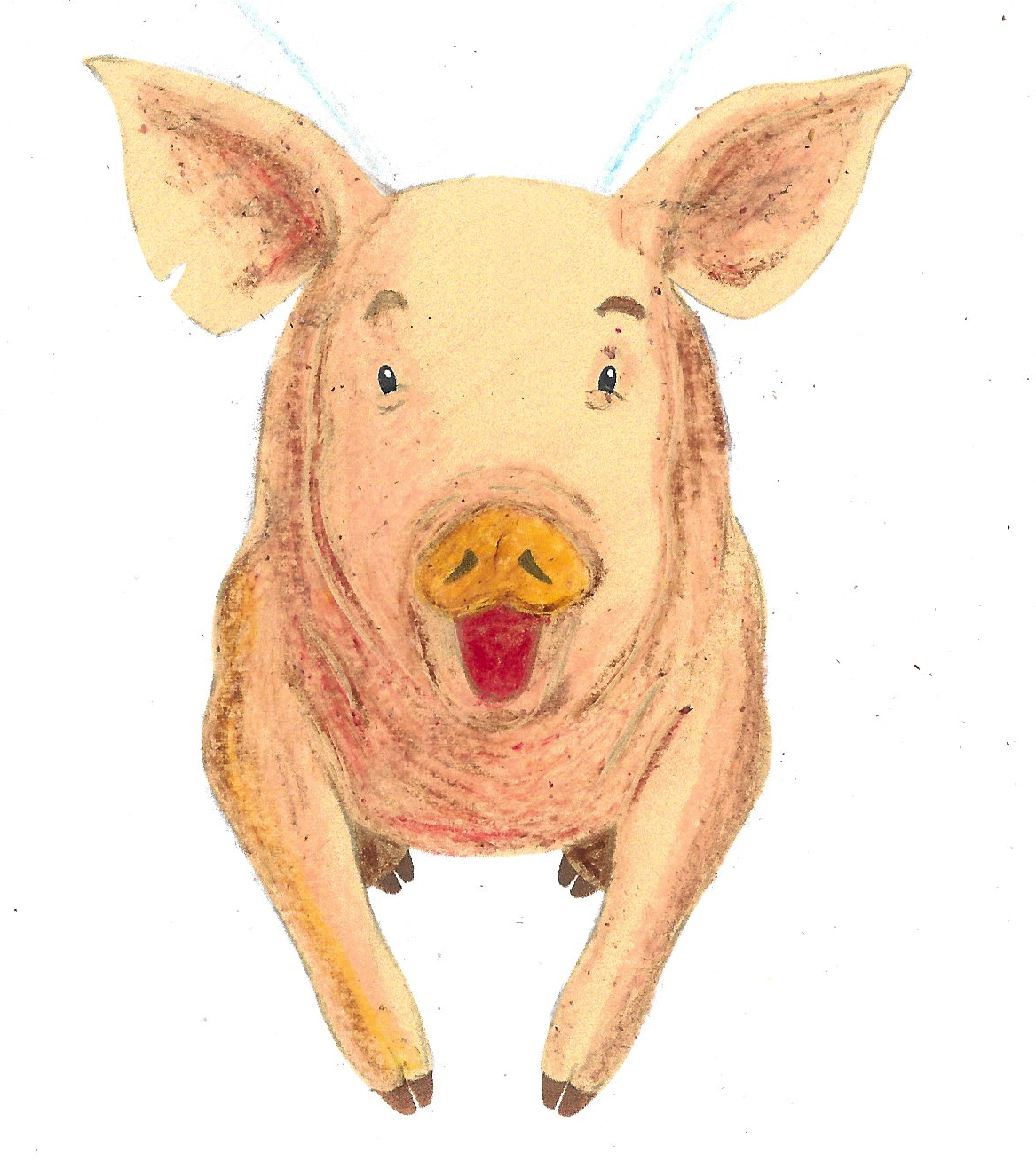
(click on image for larger version, opens in new tab)
I found the result quite visually offensive so tried to amend this by playing with the saturation, which I think did improve it slightly as the colours became more ‘pig-like’.
I still was not happy with the outcome, however, so made a tool change, switching to coloured pencils. Although some of the lines were misplaced I was actually surprised by the final result. It reminded me of illustrations that are often found in children’s books. I quite liked the effect of having the printed base layer of colour and then enhancing this with coloured pencil outlines that also add tone. I also limited myself to two pencils – one orange and one blue – which I felt resulted in a cleaner finish. It would have been better if I had added a background when initially planning the composition. This is definitely a technique I would like to continue to explore.
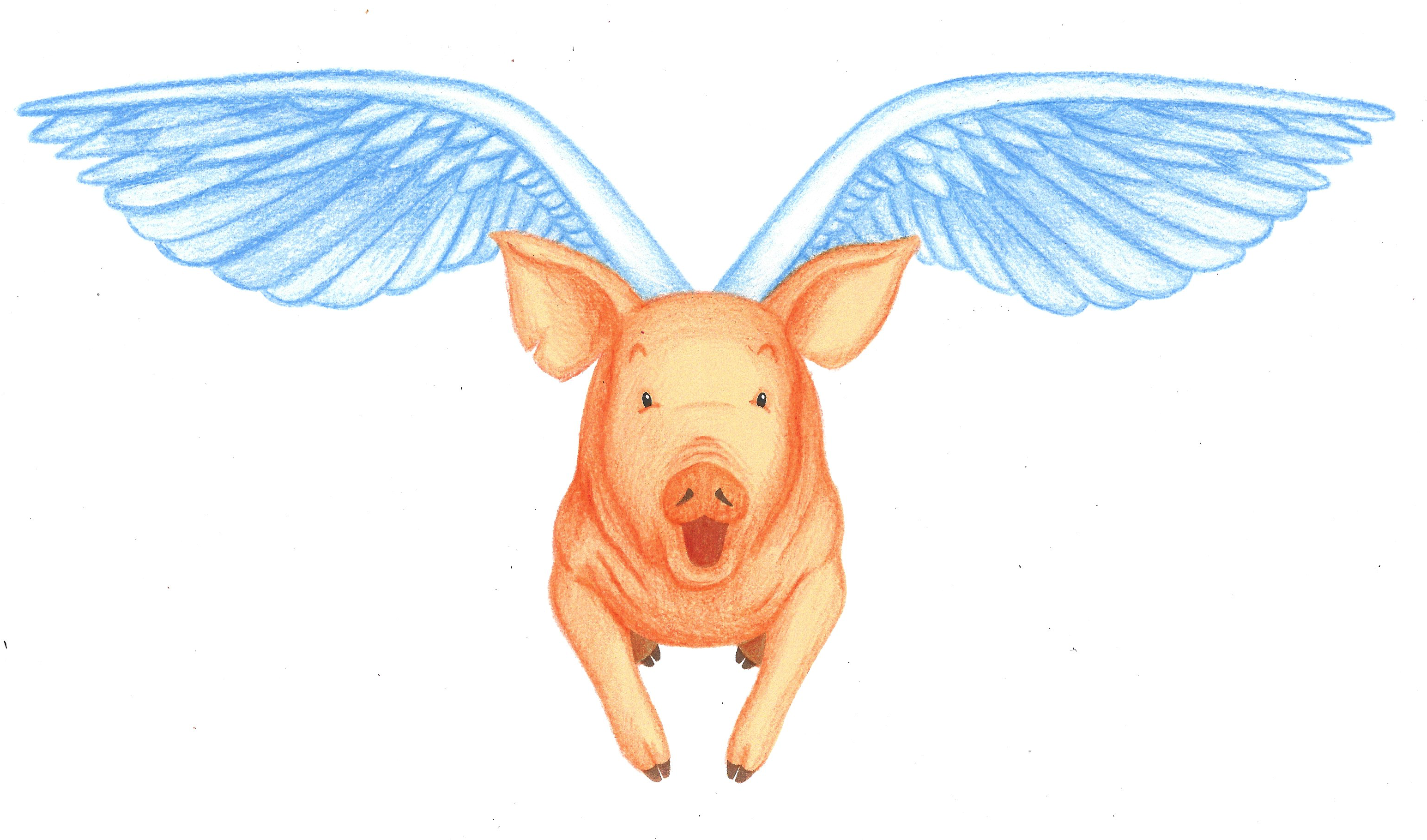
(click on image for larger version, opens in new tab)
When I desaturated the illustration it was possible to see the value levels. I thought those on the pig’s body were acceptable, but the wings were too uneven and the shadowed parts were not positioned correctly.
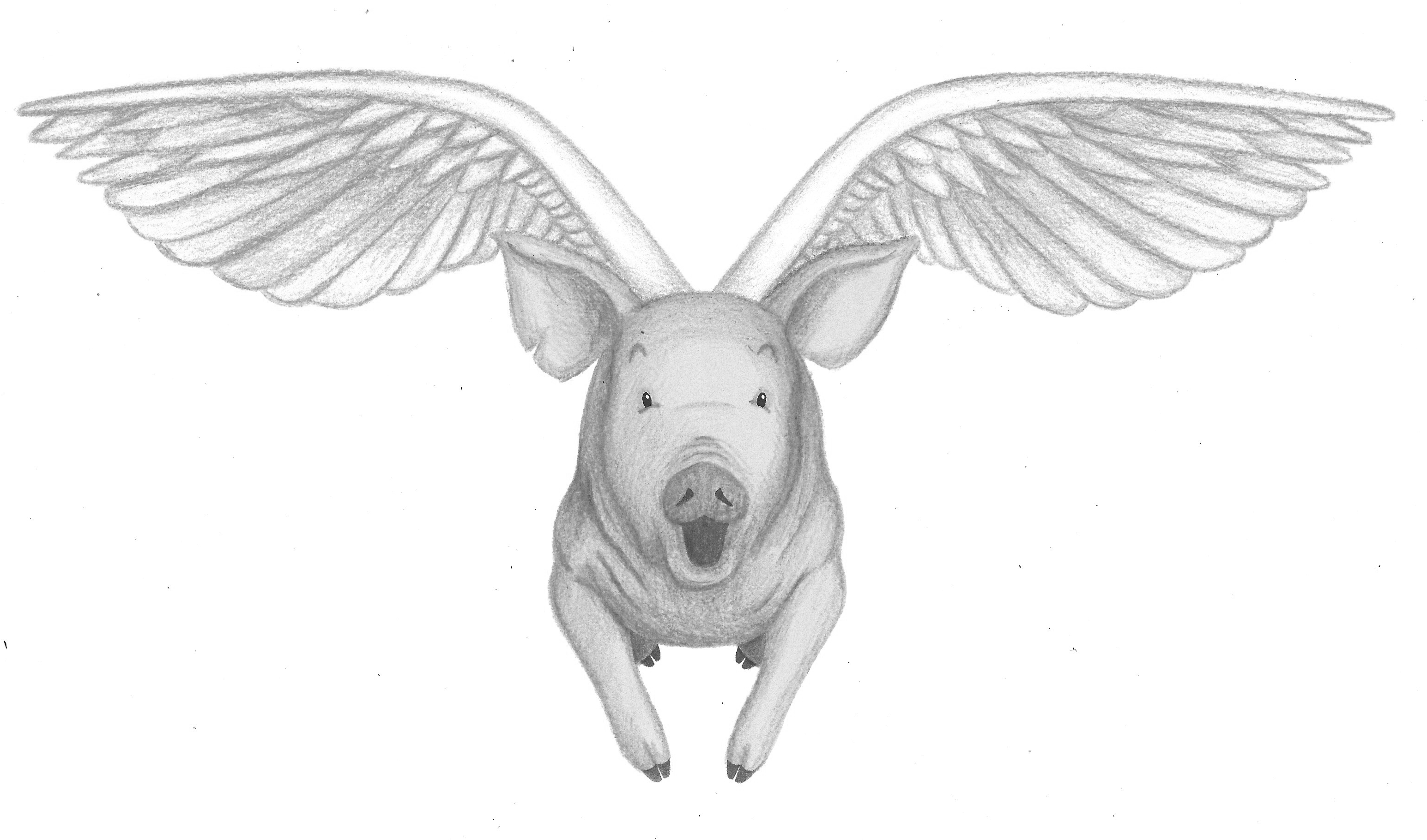
(click on image for larger version, opens in new tab)
Final Thoughts And Other Ideas To Explore
I felt I limited myself with this exercise. Initially I became too caught up with the subject of ‘hybrid’ and devising elaborate composition ideas in my head, which I then doubted my ability to be able to recreate on paper. I also was too fixated on creating issues of how I was going to produce the second part of the brief, which required me to ‘colour-print-draw’. Therefore by the time I actually got to the point where I had a drawing that was reasonable to experiment with, my mind felt rather fatigued. I also think being unsuccessful at finding examples of artists/illustrators who use hybrid techniques, also hindered my planning stages.
I did note down some ideas that could have been potential options to explore, which included:
- Printing on newsprint or pages from books
- Printing on tissue paper/coloured paper/thicker paper
- Textures
- Adding colour digitally to a linocut print
- Collage
- Painting in Photoshop
- Animating a drawing – e.g. eyes blinking, wings flapping.
- 3D version/mannequin
- Add movement lines to print out
It would have been ideal to have access to an A3 printer and working out how to add paint to a printout without the ink running due to the water content. I also need to force myself to explore the countless options available in Photoshop (along with Illustrator). This would have enabled me to add digital colour to the ink version of the flying pig, which is what many illustrators seem to use as part of their process.
On the positive side I was quite happy with the digital composite I produced, but I was most satisfied with the combination of the coloured pencils on top of the printed base colours, which was a technique I had not considered prior to this exercise.
Bibliography
Encyclopedia Britannica (2021) pigeon. Available at: https://www.britannica.com/animal/pigeon (Accessed 21 October 2022).
iStock by Getty Images (n.d.) Pig Isolated Stock Photos. Available at: https://www.istockphoto.com/search/2/image?phrase=pig+isolated (Accessed 21 October 2022).
National Geographic Kids (n.d.) Pig. Available at: https://kids.nationalgeographic.com/animals/mammals/facts/pig (Accessed 21 October 2022).
Pixabay (2019) Clouds Nature Sky. Available at: https://pixabay.com/photos/clouds-nature-sky-cumulus-weather-4215608/ (Accessed 23 October 2022).
Pixabay (2017) Sky Clouds Blue. Available at: https://pixabay.com/photos/sky-clouds-blue-white-weather-air-2076868/ (Accessed 23 October 2022).
Pixabay (2014) Sparkler Sylvester Dark. Available at: https://pixabay.com/photos/sparkler-sylvester-dark-shining-477598/ (Accessed 23 October 2022).
Wikipedia (2022) Centaur. Available at: https://en.wikipedia.org/wiki/Centaur (Accessed 17 October 2022).
Wikipedia (n.d.) Domestic pigeon. Available at: https://en.wikipedia.org/wiki/Domestic_pigeon (Accessed 21 October 2022).
Wikipedia (n.d.) Gorgon. Available at: https://en.wikipedia.org/wiki/Gorgon (Accessed 17 October 2022).
Wikipedia (n.d.) Griffin. Available at: https://en.wikipedia.org/wiki/Griffin (Accessed 17 October 2022).
Wikipedia (n.d.) Kurma. Available at: https://en.wikipedia.org/wiki/Kurma (Accessed 17 October 2022).
Wikipedia (n.d.) Lamia (Basque mythology). Available at: https://en.wikipedia.org/wiki/Lamia_(Basque_mythology) (Accessed 17 October 2022).
Wikipedia (2022) List of hybrid creatures in folklore. Available at: https://en.wikipedia.org/wiki/List_of_hybrid_creatures_in_folklore (Accessed 17 October 2022).
Wikipedia (n.d.) Pegasus. Available at: https://en.wikipedia.org/wiki/Pegasus (Accessed 17 October 2022).
Wikipedia (n.d.) Pig. Available at: https://en.wikipedia.org/wiki/Pig (Accessed 21 October 2022).
Wikipedia (n.d.) Rock dove. Available at: https://en.wikipedia.org/wiki/Rock_dove (Accessed 21 October 2022).
Wikipedia (n.d.) Tarasque. Available at: https://en.wikipedia.org/wiki/Tarasque (Accessed 17 October 2022).
Wikipedia (n.d.) Werecat. Available at: https://en.wikipedia.org/wiki/Werecat (Accessed 17 October 2022).
Wikipedia (n.d.) Werewolf. Available at: https://en.wikipedia.org/wiki/Werewolf (Accessed 17 October 2022).
Wikipedia (n.d.) When pigs fly. Available at: https://en.wikipedia.org/wiki/When_pigs_fly (Accessed 20 October 2022).
Wikipedia (n.d.) Winged cat. Available at: https://en.wikipedia.org/wiki/Winged_cat (Accessed 17 October 2022).
Wikipedia (n.d.) Winged lion. Available at: https://en.wikipedia.org/wiki/Winged_lion (Accessed 17 October 2022).
Wikipedia (n.d.) Wolpertinger. Available at: https://en.wikipedia.org/wiki/Wolpertinger (Accessed 17 October 2022).
